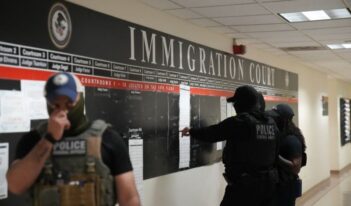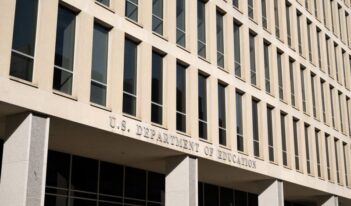
The APA is at the center of state efforts to challenge the Trump Administration’s education policy changes.
The summer of 2018 marks a new phase in the Trump Administration’s attempts to roll back protections for student loan borrowers put in place under the Obama Administration.
On the eve of the 2016 presidential election, the U.S. Department of Education issued what is known as the “borrower defense to repayment” rule. This regulation, which would officially take effect in July 2017, aimed to assist student borrowers in determining their eligibility for loan forgiveness under the Higher Education Act and to prevent predatory institutions from taking advantage of prospective students.
The Education Department issued its borrower defense rule partly in response to advocacy efforts on behalf of student borrowers who, relying on promises of career prospects from some for-profit universities, took out large loans that they would never be able to repay. Among other things, the rule required that struggling educational institutions provide clear “plain-language” warnings about poor loan repayment outcomes. It also sought to provide clarity and guidance to student borrowers about how to obtain relief when educational institutions had misled them about their chances of finding a job upon graduation.
Immediately following President Donald J. Trump’s inauguration, however, the Education Department reportedly stopped approving thousands of pending borrower defense claims filed under earlier regulations. By July 2017, the number of outstanding claims had apparently climbed to more than 65,000.
Last June, Secretary of Education Betsy DeVos announced that the Education Department would postpone the effective date of the Obama-era rule, allowing the Department to undergo a new notice-and-comment rulemaking to revise the borrower defense regulations yet again.
Whenever it issues rules—including those that revise existing ones—the Education Department is required by law to use a bureaucratic process known as negotiated rulemaking. Because negotiated rulemaking can be time-intensive, the Department claimed that 2019 would be the earliest a new rule could be issued.
Critics of DeVos have suggested that she delayed the borrower defense rule in an effort to aid for-profit institutions. DeVos claimed that the rule was “muddled.”
Democratic attorneys general in eighteen states have sued the Department over its decision to delay the borrower defense rule, arguing that the delay notice constituted a “substantive rule” that should have undergone its own notice-and-comment period in compliance with the Administrative Procedure Act (APA). An agency spokesperson has characterized the lawsuit as “frivolous.” The Department has argued that it has the power to delay the rule under the APA, which allows agencies to postpone rules so long as “justice so requires” while judicial action is pending. Here, the Department justified its action by pointing to a pending lawsuit filed by for-profit colleges in California.
A separate lawsuit filed by the attorneys general of Massachusetts, New York, and Illinois last December alleged that the Education Department violated the APA by arbitrarily and capriciously refusing to discharge the student loan payments of borrowers who attended Corinthian Colleges, a for-profit university accused of predatory lending. That suit also alleged that the Department violated the APA for failing to approve thousands of individual claims for relief and for attempting to collect involuntary repayments from student borrowers who attended Corinthian, despite the Department’s finding in 2016 that these students had been the victims of fraud.
Even in the face of these legal challenges, the Trump Administration has continued to narrow relief options for student borrowers who signed up for what they claim were predatory loans.
Last month, the Education Department proposed a revision to the Obama-era rule which would require students to be in default before they can seek relief through loan forgiveness. The proposed rule would also bar state attorneys general from filing class action lawsuits against institutions on behalf of defrauded constituents by replacing state standards for loan forgiveness with a uniform federal standard. This proposed federal standard would require student borrowers to demonstrate that their institution had intended to deceive them, a more difficult hurdle to clear than under rules now in place.
Previously, DeVos has apparently characterized the Obama-era borrower defense rule as handing out “free money” to any student borrower who “raised his or her hand” and claimed to have been defrauded. The Department of Education explains that its proposed policy change would aim to protect taxpayers—who fund the relief program—from false claims purportedly made by student borrowers and do a better job of balancing the needs of universities and borrowers.
The impact of the proposed rulemaking, if adopted, would likely be far-reaching. Over the course of the first year of the Trump Administration, the number of student borrowers still awaiting relief from the Department has reportedly amassed approximately 95,000. By the end of President Trump’s first year in office, the Department had ruled on about 21,500 claims, rejecting 8,600 and awarding another 12,900 either partial or full relief.
This essay is one of two student-written pieces selected as the top essays from Professor Sophia Lee’s spring 2018 administrative law course at University of Pennsylvania Law School. Students in the class each researched a recent U.S. regulation and submitted their analysis for consideration in The Regulatory Review’s annual essay competition.
Both winning essays this year examined the Department of Education’s “borrower defense to repayment” rule.



